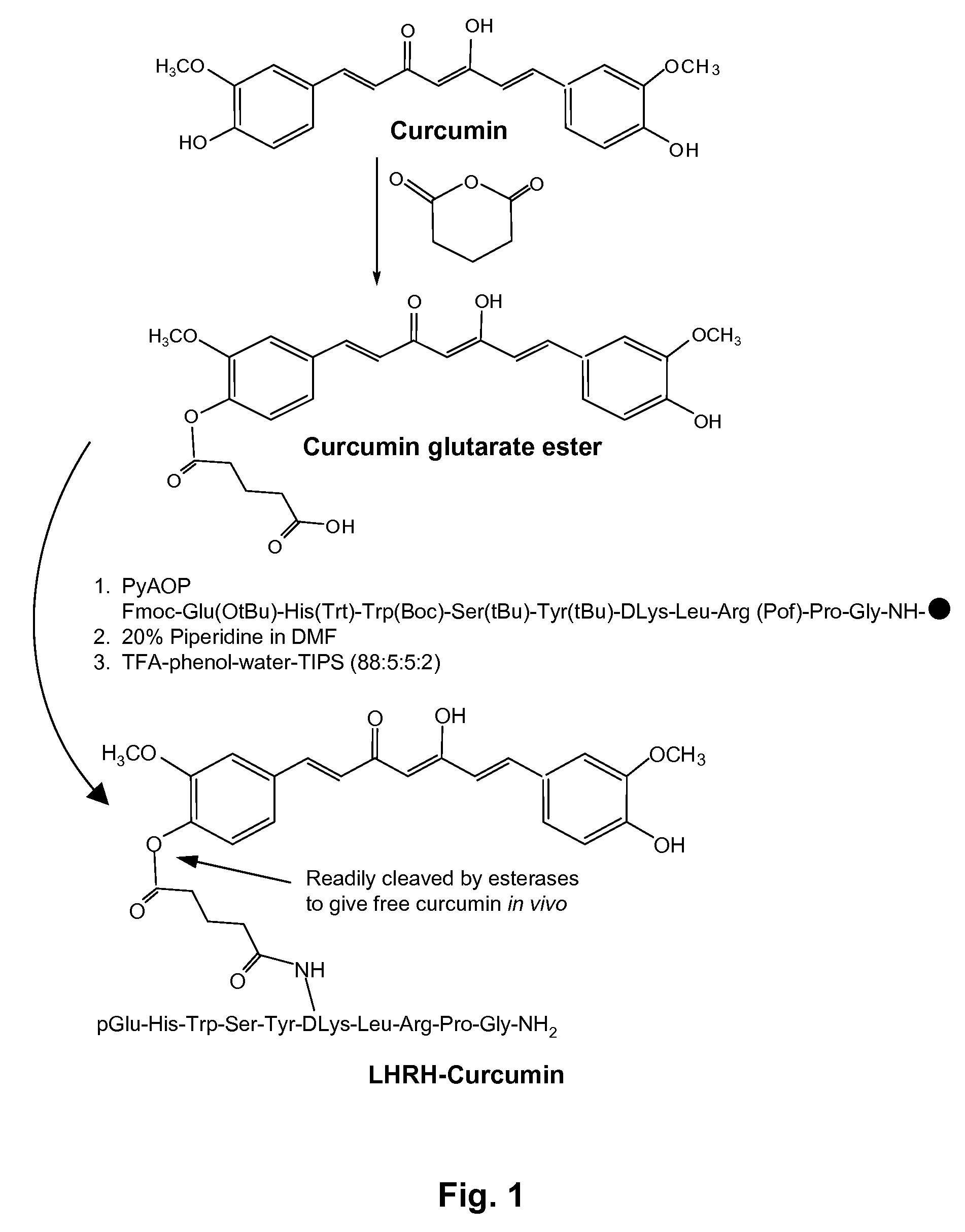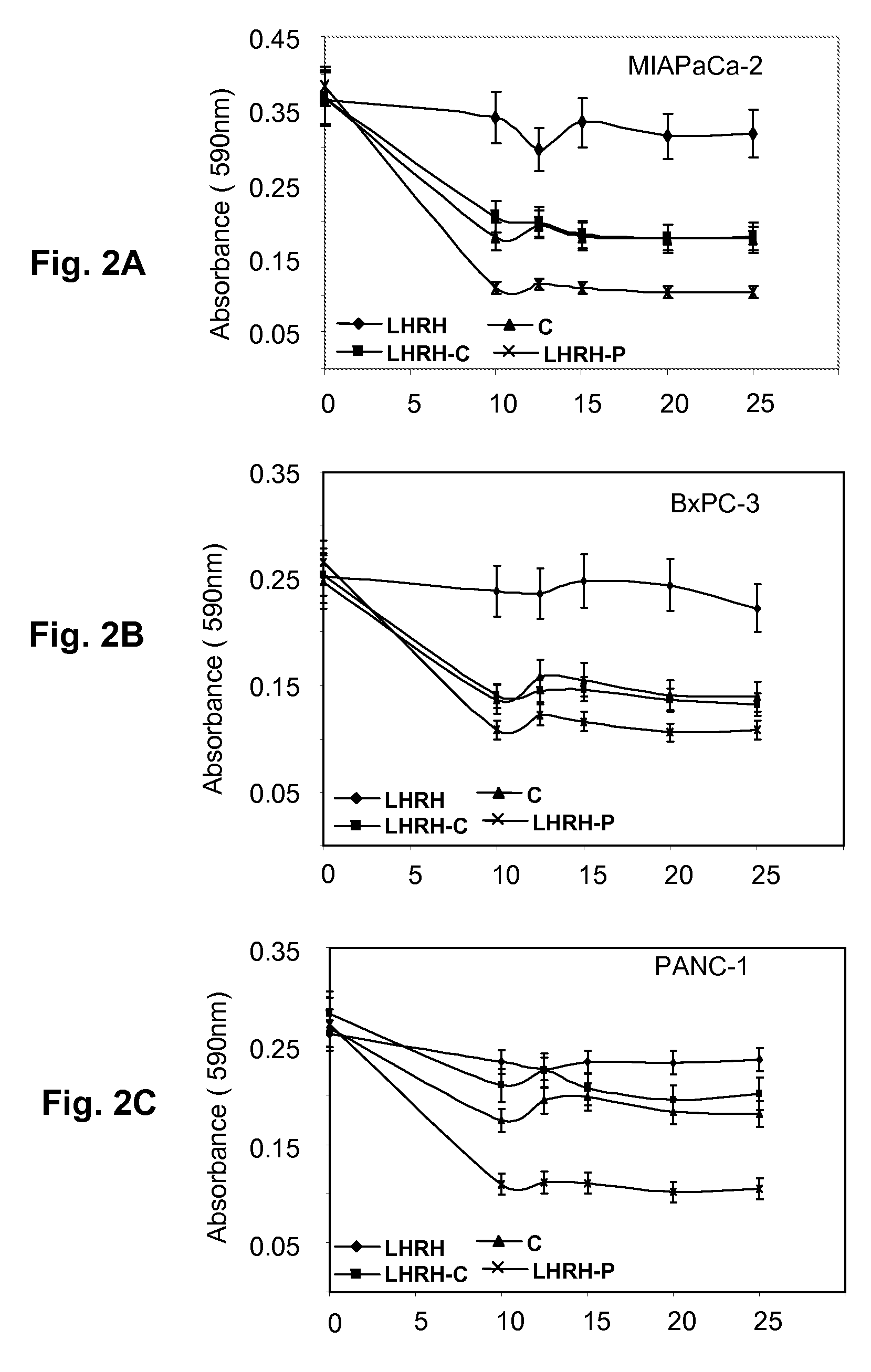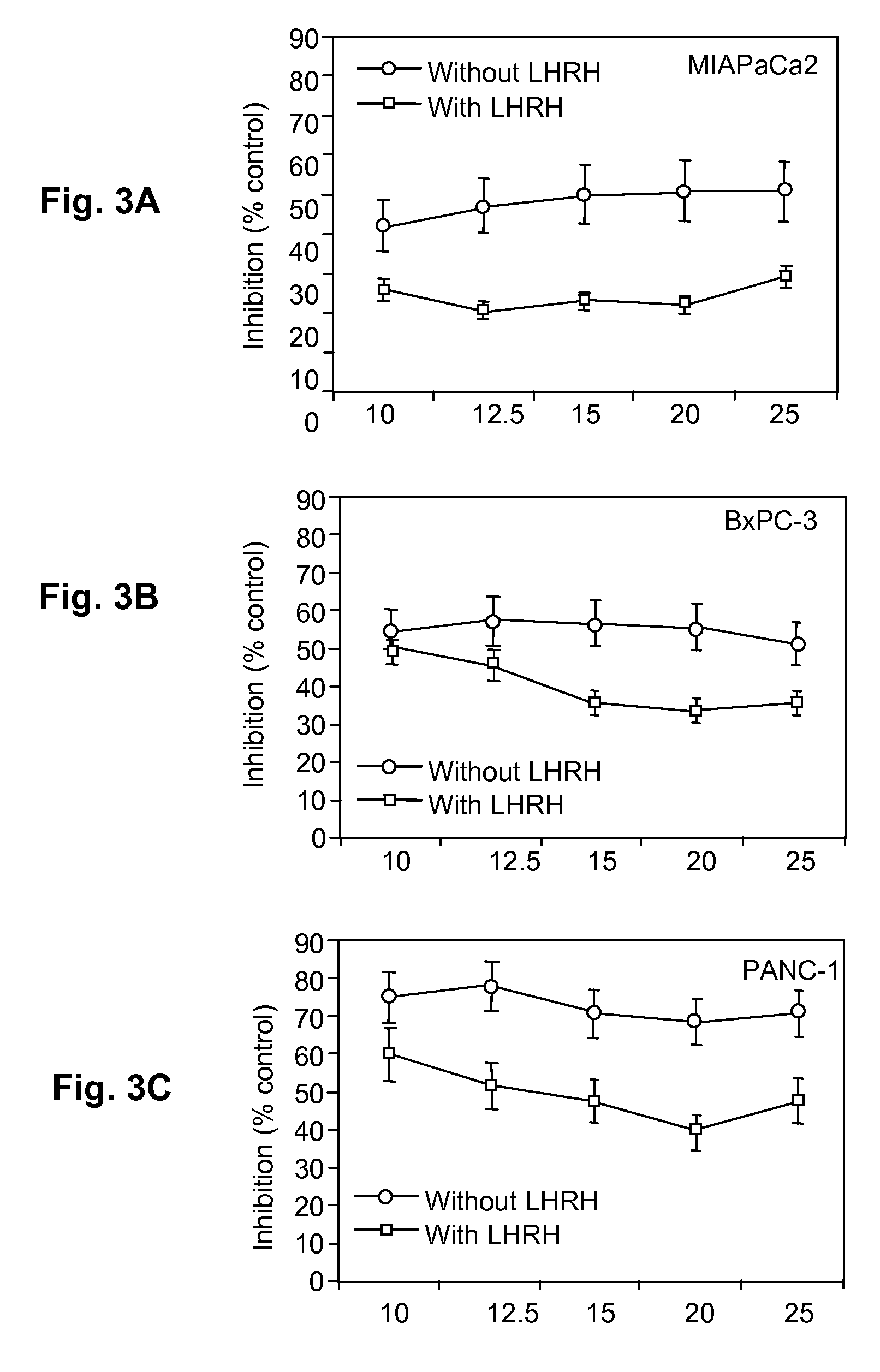Curcumin conjugates for treating and preventing cancers
a technology of curcumin and conjugates, applied in the field of cancer treatment and prevention, can solve the problems that curcumin derivatives are not particularly successful in water solubility, and achieve the effects of preserving the anti-cancer effect of curcumin, facilitating intravenous administration, and enhancing water solubility
- Summary
- Abstract
- Description
- Claims
- Application Information
AI Technical Summary
Benefits of technology
Problems solved by technology
Method used
Image
Examples
examples 1-3
[0034]The following peptides were synthesized for comparison studies:
[0035]
LHRH:(SEQ ID NO 1)pGlu-His-Trp-Ser-Tyr-Gly-Leu-Arg-Pro-GlyPhor21 lytic peptide:(SEQ ID NO 2)Lys-Phe-Ala-Lys-Phe-Ala-Lys-Lys-Phe-Ala-Lys-Phe-Ala-Lys-Lys-Phe-Ala-Lys-Phe-Ala-LysLHRH-Phor21 conjugate:(SEQ ID NO 3)pGlu-His-Trp-Ser-Tyr-Gly-Leu-Arg-Pro-Gly-Lys-Phe-Ala-Lys-Phe-Ala-Lys-Lys-Phe-Ala-Lys-Phe-Ala-Lys-Lys-Phe-Ala-Lys-Phe-Ala-Lys
The peptides were synthesized by a commercial peptide-synthesis facility, American Peptide Company, Inc (Sunnyvale, Calif., USA). The purity of each of the peptides was greater than 85%, as determined by reverse-phase high-performance liquid chromatography.
example 4
Design and Synthesis of LHRH-Curcumin Conjugate
[0036]All chemicals were purchased from Sigma Chemical Co. (St. Louis, Mo., USA) or from Fisher Scientific (NJ, USA). LHRH-Curcumin was synthesized at the Louisiana State University Peptide Facility. A prototype embodiment employed a glutarate ester linkage to covalently link the two components of the conjugate. Glutarate ester linkages yield derivatives that are stable in aqueous solution, but that will readily hydrolyze in the presence of an esterase to release the drug molecule at the delivery site. The reaction of Curcumin with glutaric anhydride in the presence of pyridine produced Curcumin glutarate ester. See FIG. 1. Coupling the Curcumin glutarate ester to [DLys6]-LHRH, either in solution or during solid-phase synthesis, produced the LHRH-Curcumin conjugate. It is known that [DLys6]-LHRH can readily be modified with large molecules at the epsilon amino side chain of the DLys6 moiety, without compromising the ability to bind to L...
example 5
LHRH Receptor is Expressed in Human Pancreatic Cancer Cell Lines
[0040]Pancreatic cell lines MIAPaCa-2, BxPC-3, and PANC-1 were obtained from the American Type Culture Collection. All cell lines were cultured in DMEM supplemented with 10% FBS, 100 units / mL penicillin, and 100 μg / mL streptomycin. The presence and location of LHRH-receptors in these pancreatic cancer cell lines was determined by immunochemical methods.
[0041]Confocal microscopy was used to visualize the location of LHRH receptors. Cells were plated in twelve-well tissue culture plates one day before observation, and then fixed with 2% formaldehyde. The fixed cells were washed with PBS. Membranes were partially permeabilized with 0.1% Trion-X100. The cells were incubated with 2% goat serum for an hour, and then incubated overnight at 4° C. with primary antibody specific for LHRH receptor (GnRH-R Ab03, Lab Vision Corporation, Fremont, Calif.). The cells were then washed with PBS, incubated for an hour with secondary antib...
PUM
| Property | Measurement | Unit |
|---|---|---|
| solubility | aaaaa | aaaaa |
| temperature | aaaaa | aaaaa |
| structure | aaaaa | aaaaa |
Abstract
Description
Claims
Application Information
 Login to View More
Login to View More - R&D
- Intellectual Property
- Life Sciences
- Materials
- Tech Scout
- Unparalleled Data Quality
- Higher Quality Content
- 60% Fewer Hallucinations
Browse by: Latest US Patents, China's latest patents, Technical Efficacy Thesaurus, Application Domain, Technology Topic, Popular Technical Reports.
© 2025 PatSnap. All rights reserved.Legal|Privacy policy|Modern Slavery Act Transparency Statement|Sitemap|About US| Contact US: help@patsnap.com



